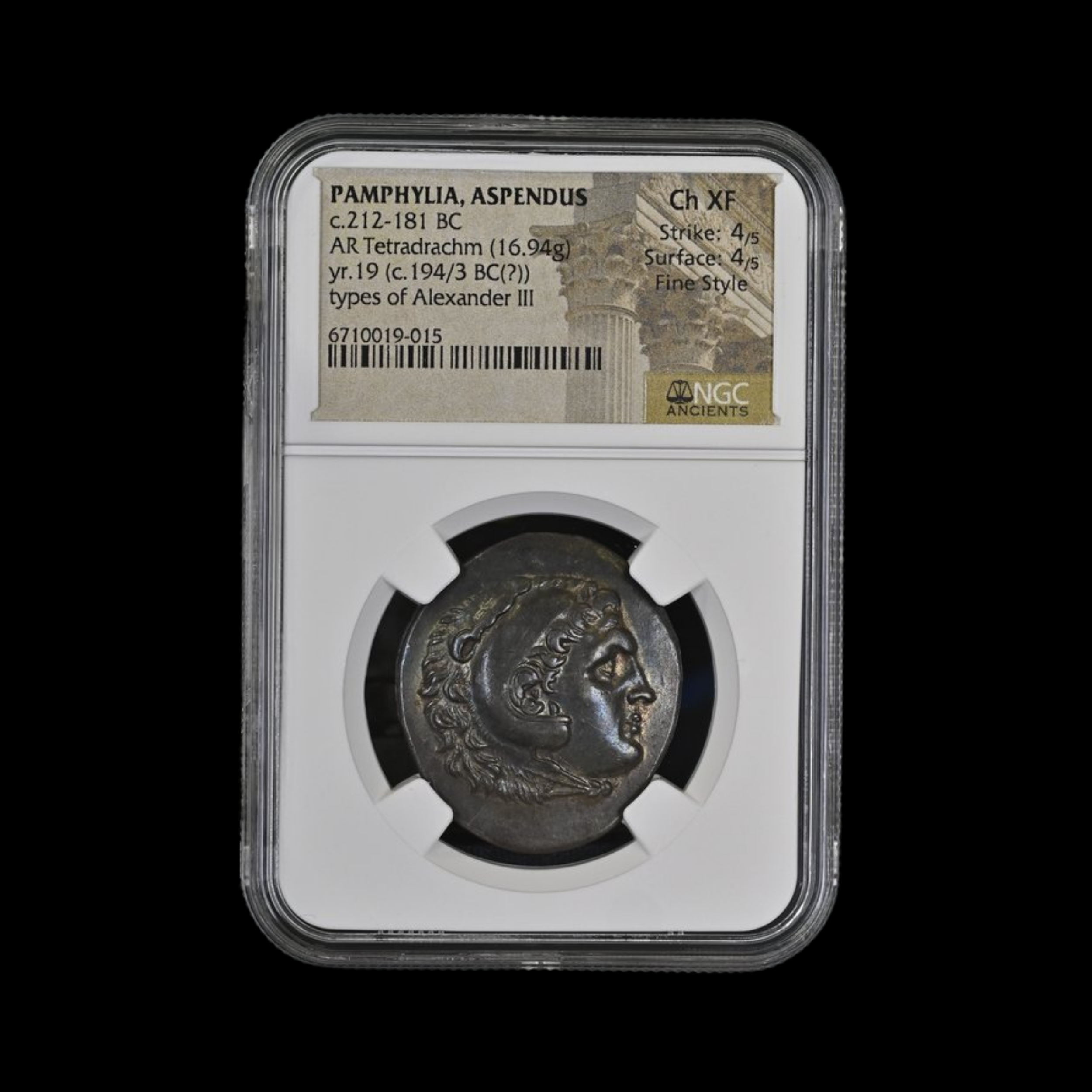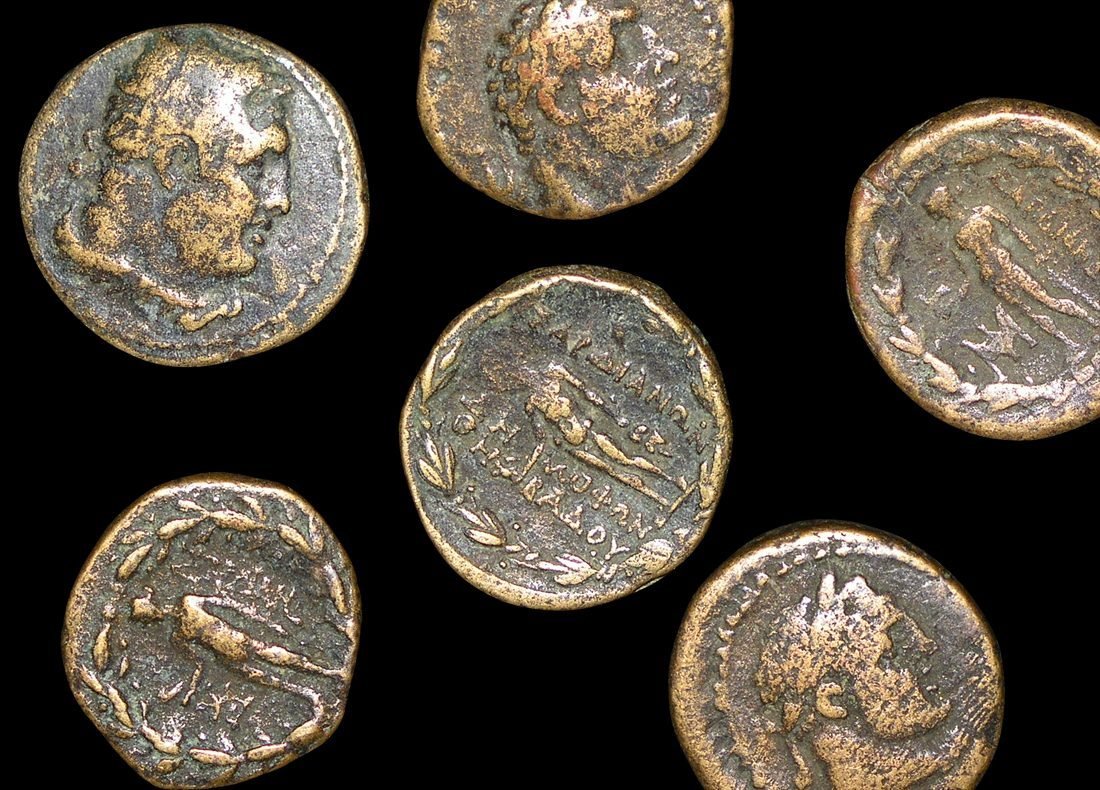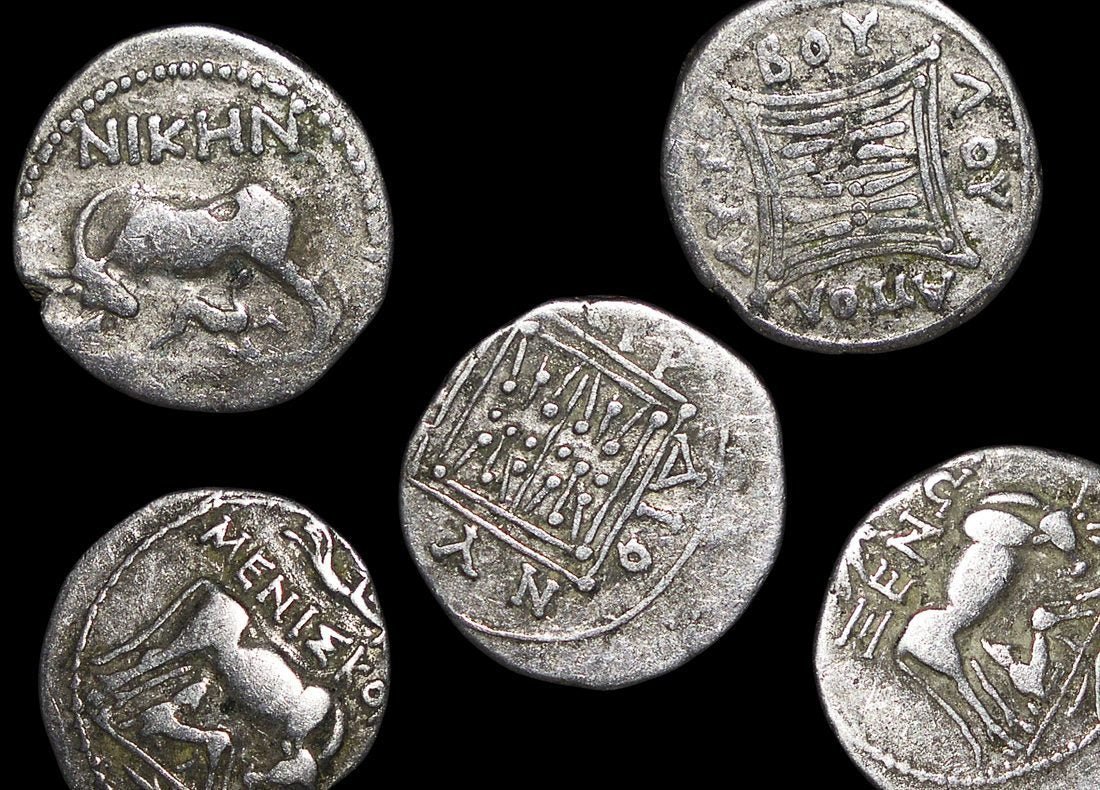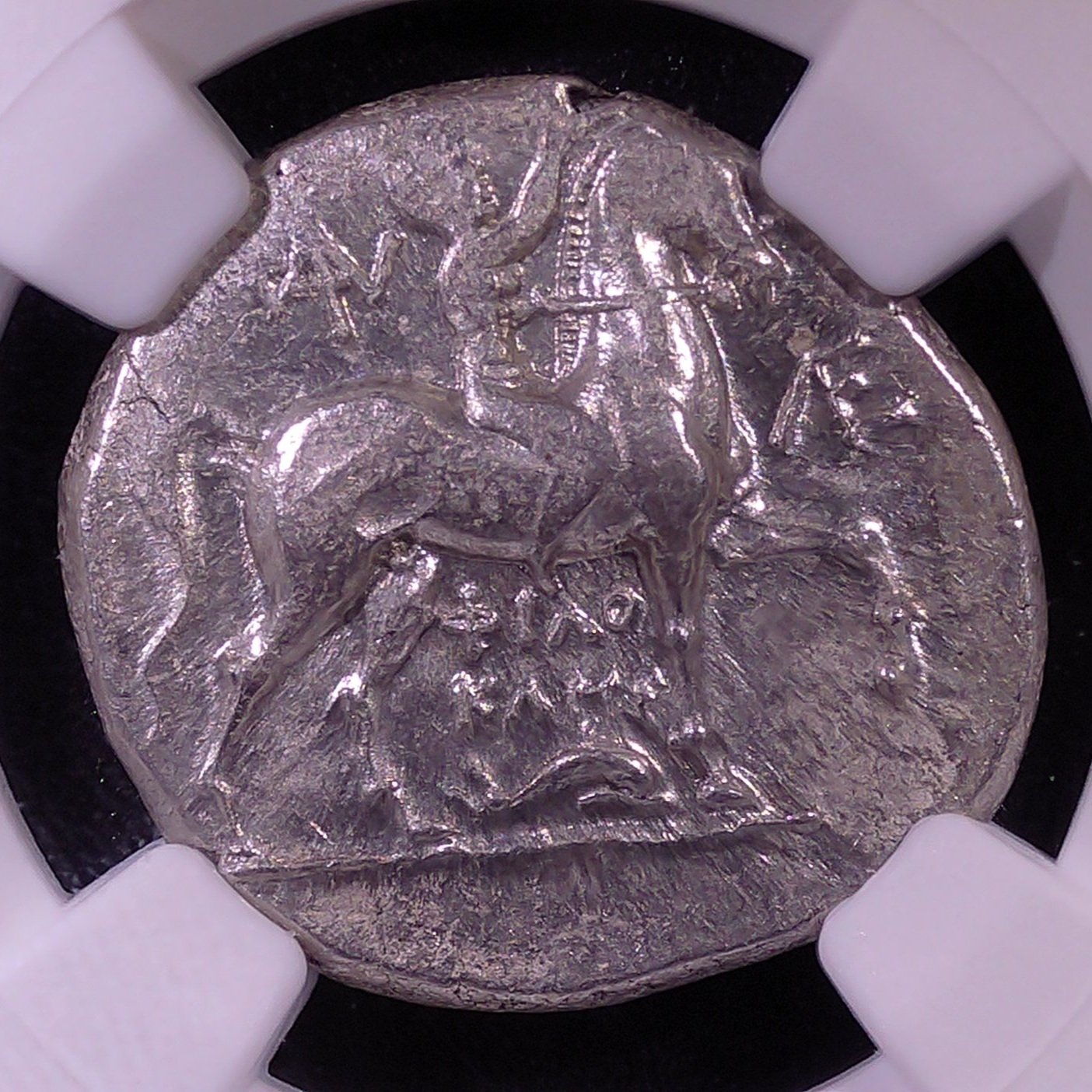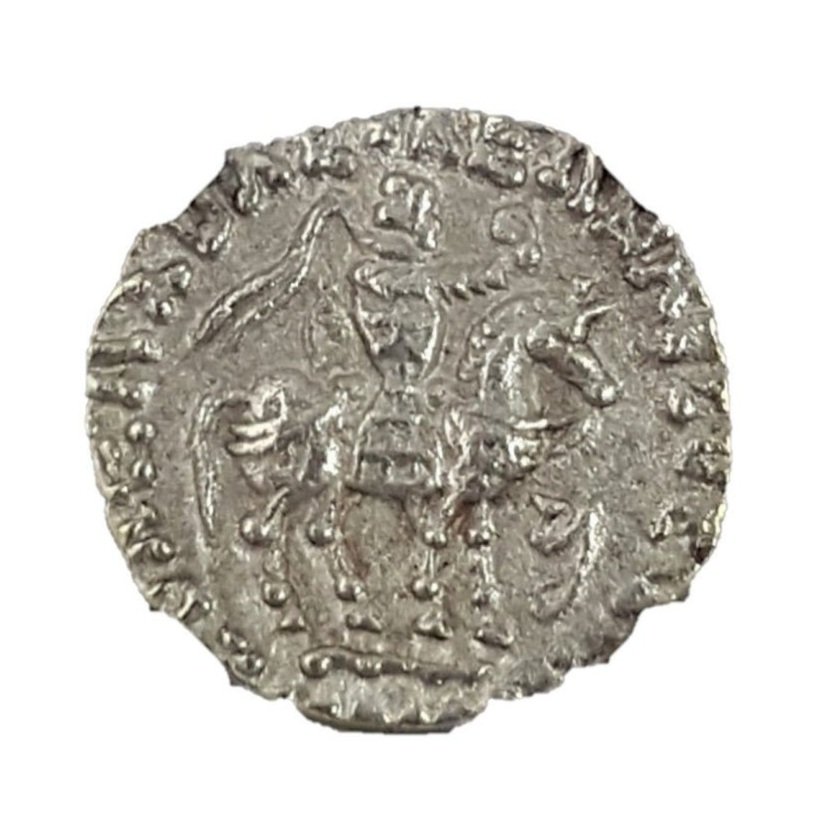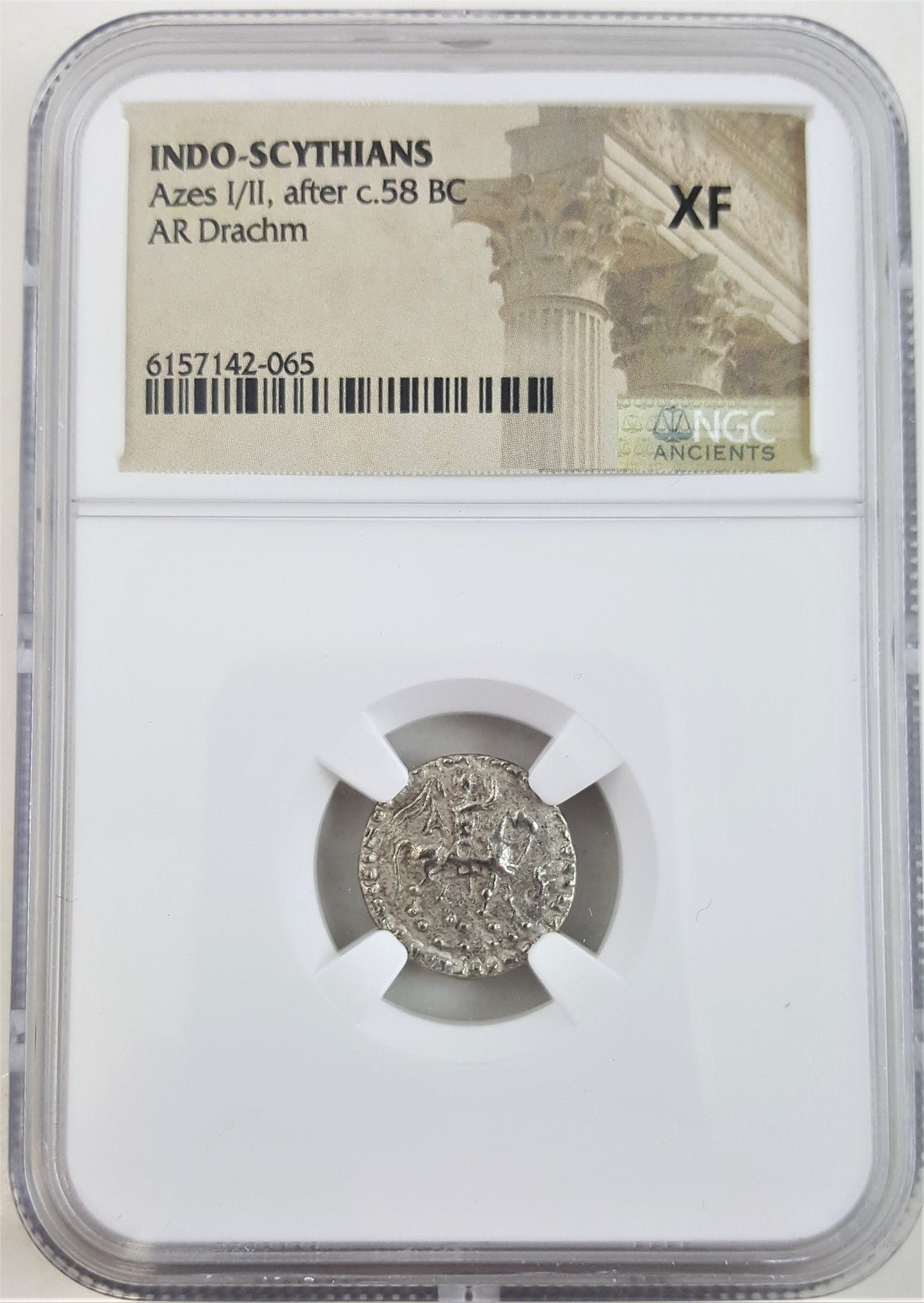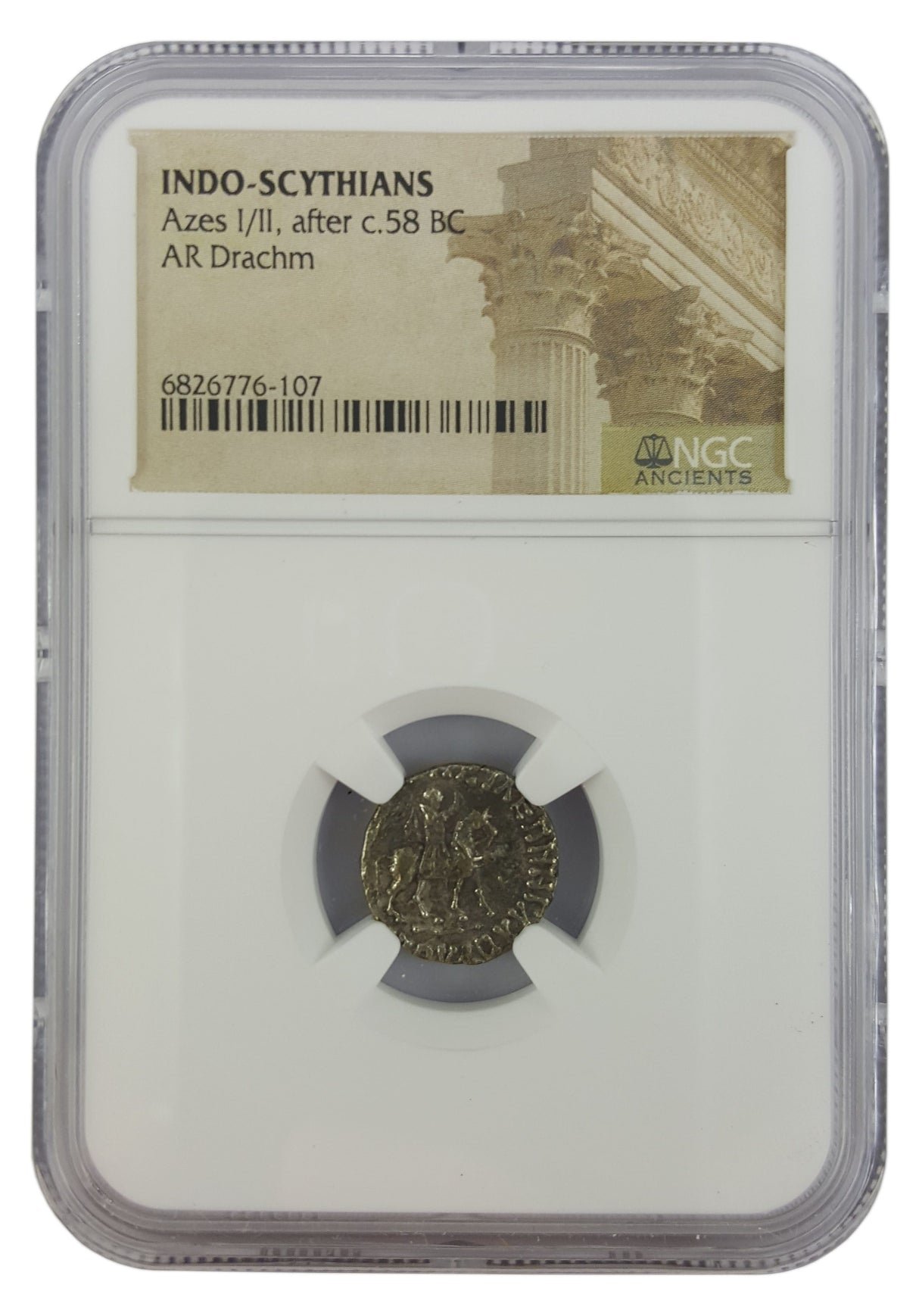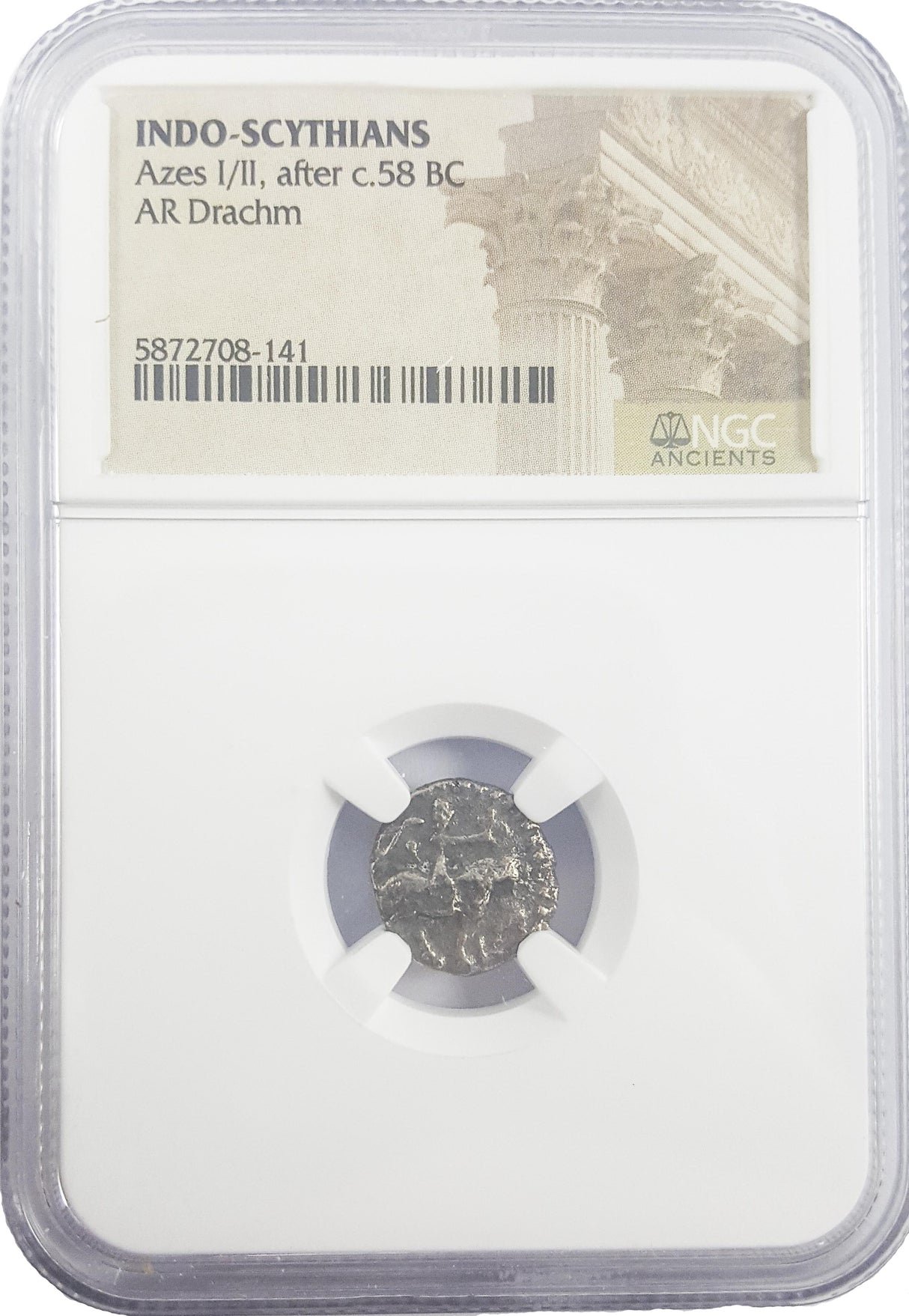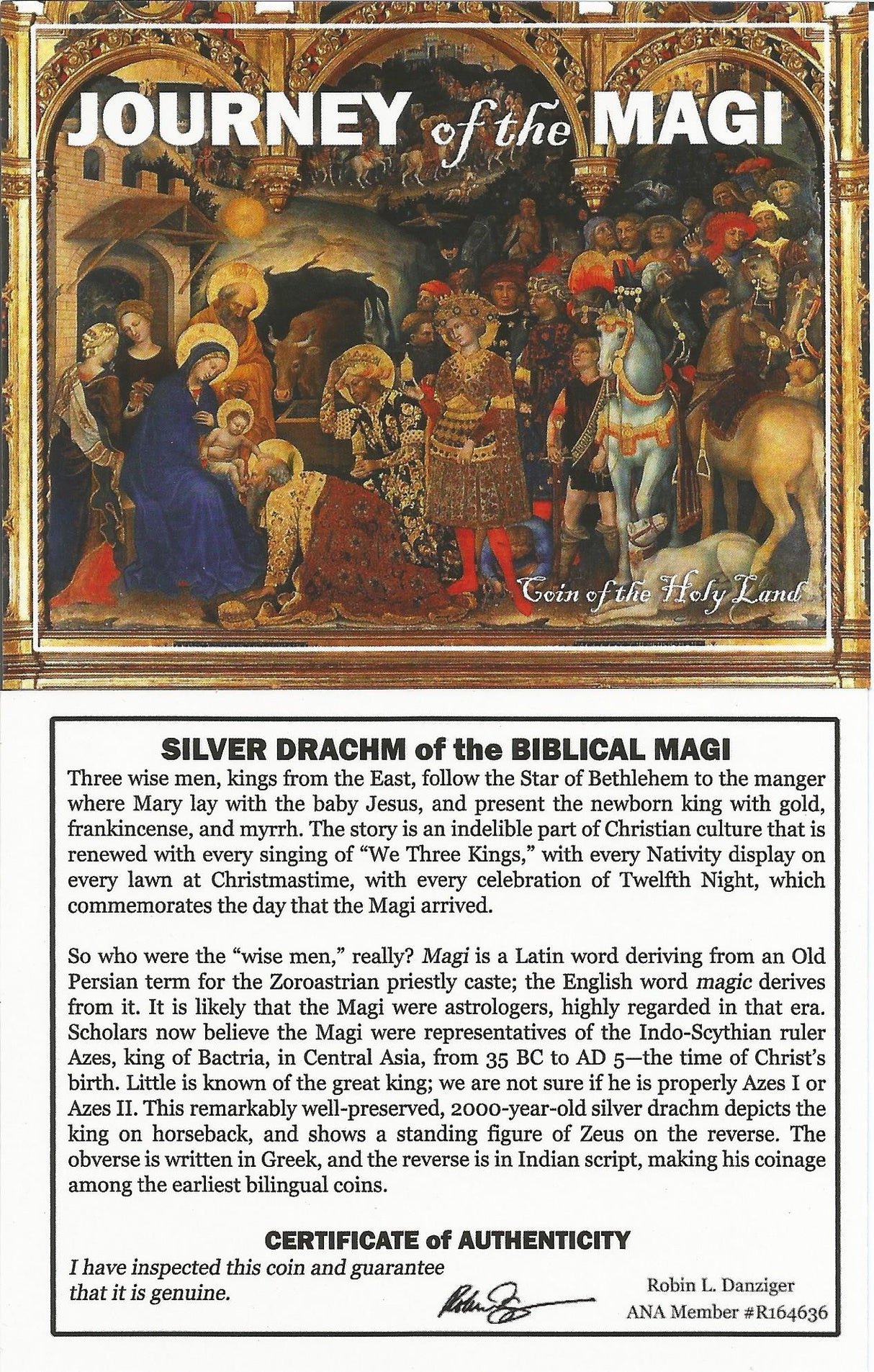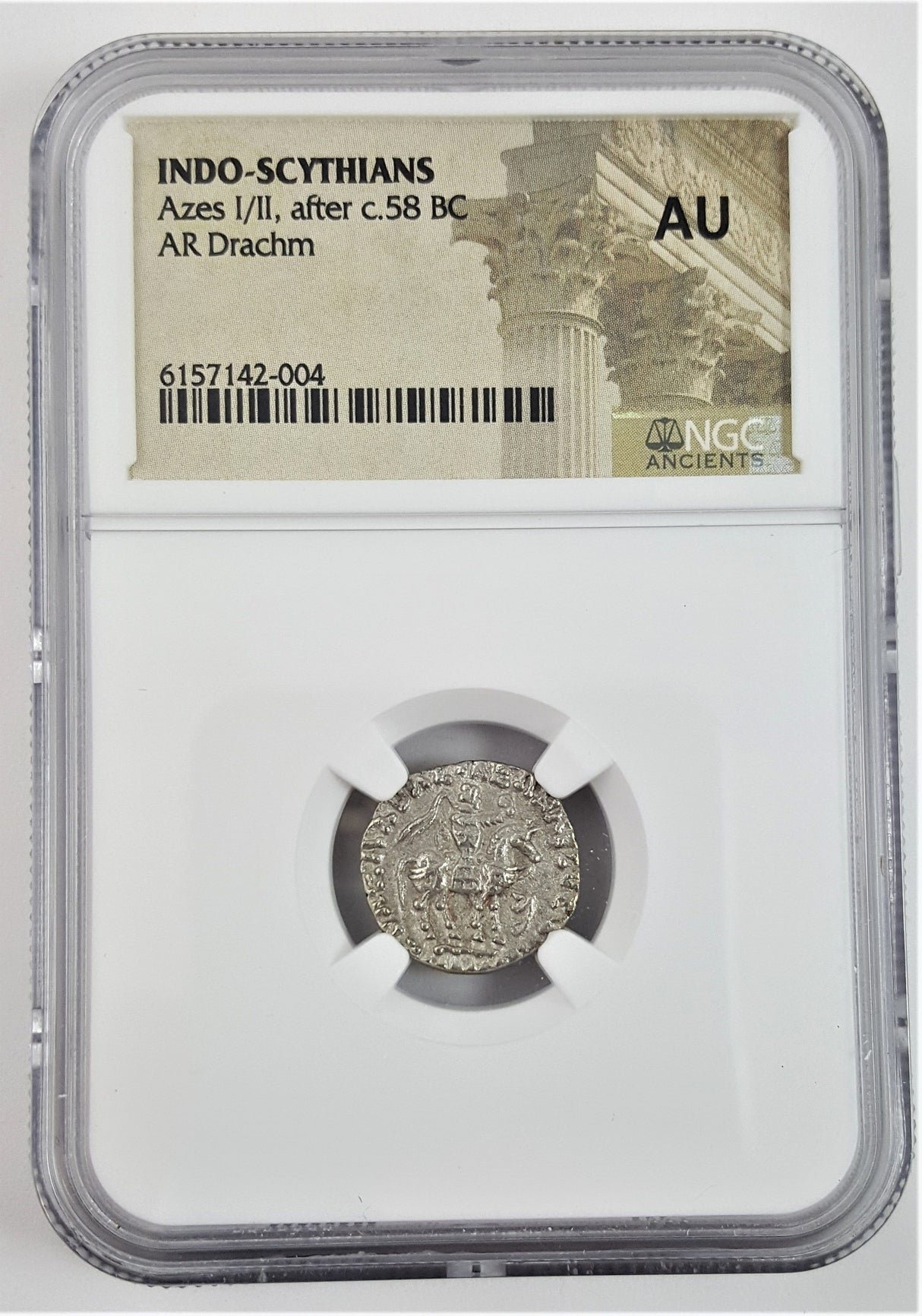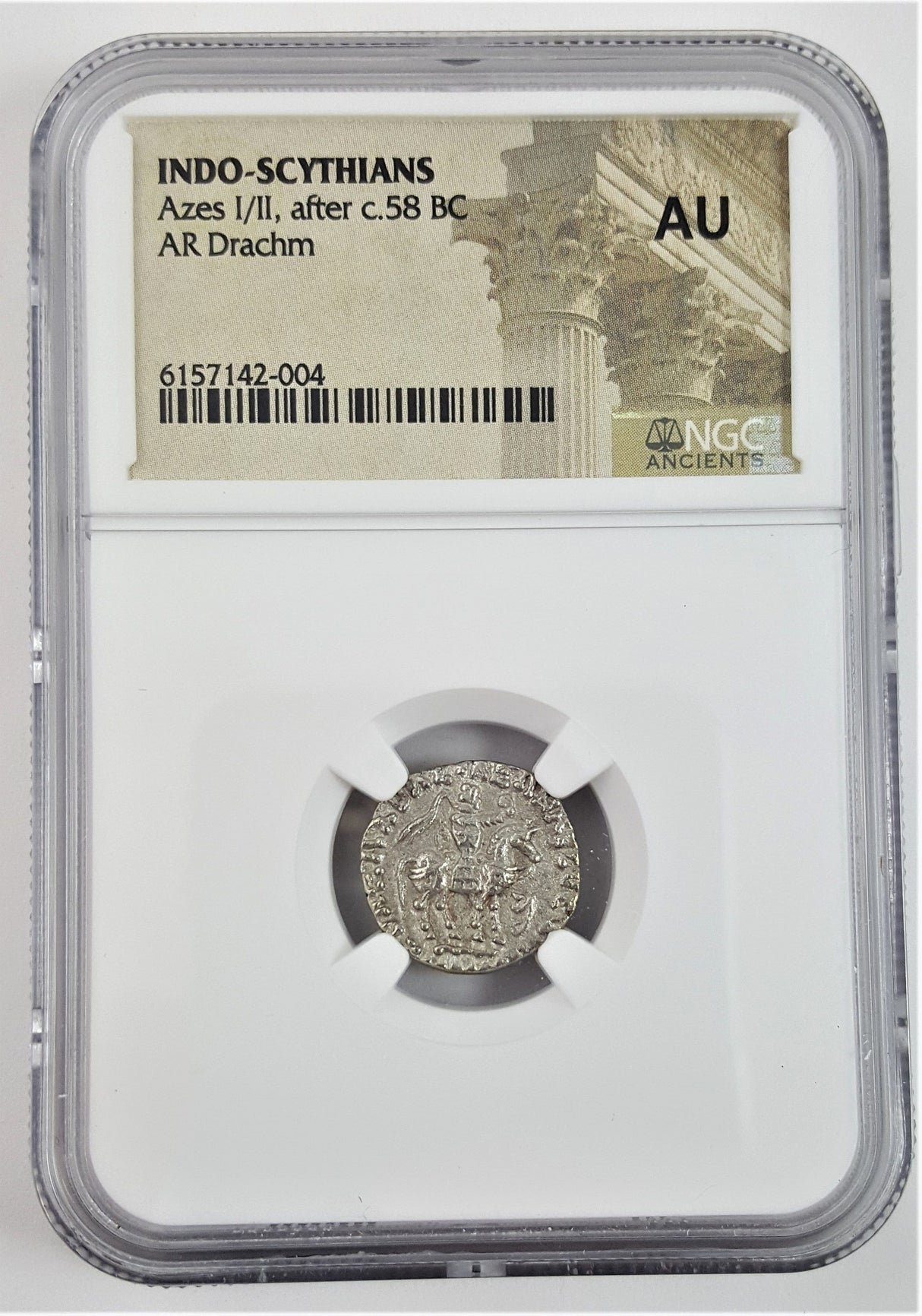Pamphylian Silver Tetradrachm (Large Silver Coin) from Aspendus with Alexander the Great's Imagery (about 2215 years ago)
This large silver coin (tetradrachm, worth four drachms) was struck around 194/3 BC (Year 19) in Aspendus, a city in Pamphylia (modern-day southern Turkey), featuring the traditional designs associated with Alexander III (the Great).
Front Side: Likely features the head of Alexander the Great or Heracles wearing a lion skin
Back Side: Probably depicts Zeus seated on a throne holding an eagle and scepter (traditional Alexander-type reverse)
Technical Details: Material: Silver (AR) Denomination: Tetradrachm (large silver coin equivalent to four drachms) Date Range: c. 212-181 BC Certification: NGC Grade Ch XF (Choice Extremely Fine) with Strike: 4/5, Surface: 4/5, Fine Style
Historical Significance: This coin demonstrates the enduring legacy of Alexander the Great's coinage designs, which continued to be used by cities throughout the Hellenistic world long after his death in 323 BC. Aspendus in Pamphylia adopted these widely recognized designs to ensure their currency would be accepted in international trade. The "Fine Style" designation indicates exceptional artistic quality in the engraving. These posthumous Alexander-type tetradrachms were among the most important international trade currencies of the ancient Mediterranean world, facilitating commerce across political boundaries.
This large silver coin (tetradrachm, worth four drachms) was struck around 194/3 BC (Year 19) in Aspendus, a city in Pamphylia (modern-day southern Turkey), featuring the traditional designs associated with Alexander III (the Great).
Front Side: Likely features the head of Alexander the Great or Heracles wearing a lion skin
Back Side: Probably depicts Zeus seated on a throne holding an eagle and scepter (traditional Alexander-type reverse)
Technical Details: Material: Silver (AR) Denomination: Tetradrachm (large silver coin equivalent to four drachms) Date Range: c. 212-181 BC Certification: NGC Grade Ch XF (Choice Extremely Fine) with Strike: 4/5, Surface: 4/5, Fine Style
Historical Significance: This coin demonstrates the enduring legacy of Alexander the Great's coinage designs, which continued to be used by cities throughout the Hellenistic world long after his death in 323 BC. Aspendus in Pamphylia adopted these widely recognized designs to ensure their currency would be accepted in international trade. The "Fine Style" designation indicates exceptional artistic quality in the engraving. These posthumous Alexander-type tetradrachms were among the most important international trade currencies of the ancient Mediterranean world, facilitating commerce across political boundaries.
This large silver coin (tetradrachm, worth four drachms) was struck around 194/3 BC (Year 19) in Aspendus, a city in Pamphylia (modern-day southern Turkey), featuring the traditional designs associated with Alexander III (the Great).
Front Side: Likely features the head of Alexander the Great or Heracles wearing a lion skin
Back Side: Probably depicts Zeus seated on a throne holding an eagle and scepter (traditional Alexander-type reverse)
Technical Details: Material: Silver (AR) Denomination: Tetradrachm (large silver coin equivalent to four drachms) Date Range: c. 212-181 BC Certification: NGC Grade Ch XF (Choice Extremely Fine) with Strike: 4/5, Surface: 4/5, Fine Style
Historical Significance: This coin demonstrates the enduring legacy of Alexander the Great's coinage designs, which continued to be used by cities throughout the Hellenistic world long after his death in 323 BC. Aspendus in Pamphylia adopted these widely recognized designs to ensure their currency would be accepted in international trade. The "Fine Style" designation indicates exceptional artistic quality in the engraving. These posthumous Alexander-type tetradrachms were among the most important international trade currencies of the ancient Mediterranean world, facilitating commerce across political boundaries.


